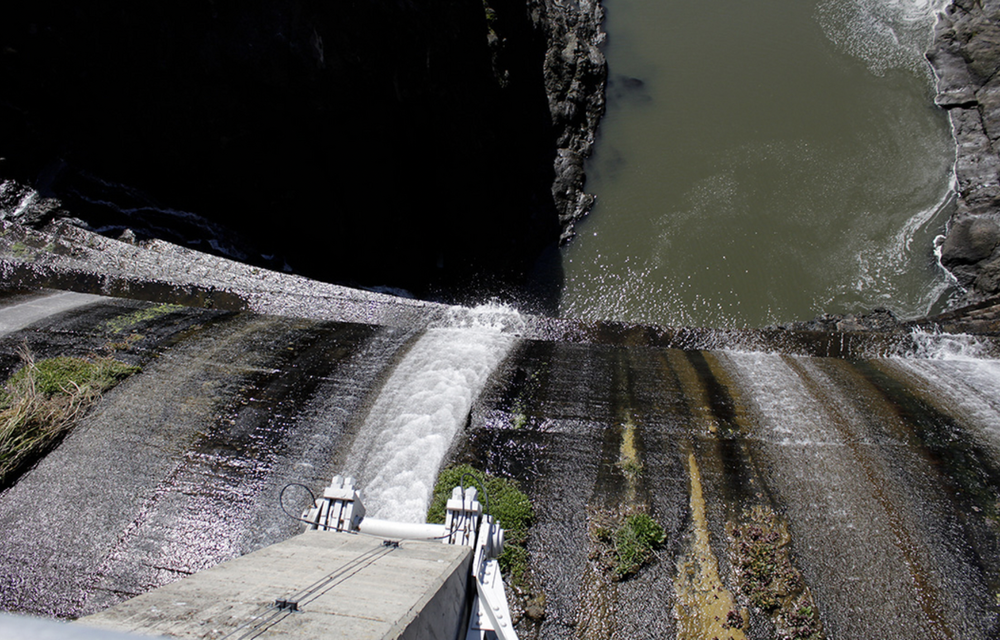Klamath River dam removal moves forward as the largest river restoration project in U.S. history

One of the four dams on the Klamath River that will be removed. PC: E&E News
CALIFORNIA – The Federal Energy Regulatory Commission (FERC) issued its Final Environmental Impact Statement (FEIS) on the removal of the lower four Klamath River dams, clearing the final hurdle to recovery of this river system and salmon fishery.
This effort is significant in that it will be the largest dam removal project in history, the largest salmon recovery effort to date, but importantly addresses righting historical wrongs, and upholding justice in our promises to Indigenous Tribes in the Pacific Northwest.
“Once again, a thorough analysis by experts reveals dam removal as key for restoring Klamath fisheries and improving water quality,” notes Yurok Vice Chairman Frankie Myers. “Our culture and our fisheries are hanging in the balance. We are ready to start work on dam removal this year.”
“Dams have decimated salmon returns on the Klamath River which means fewer harvest opportunities for family-owned commercial fishing vessels. Dam removal has the potential to save our industry and thousands of jobs in California and Oregon ports,” explains Glen Spain with Pacific Coast Federation of Fishermen’s Associations.
Brian Johnson, California Director of Trout Unlimited, acknowledges that dam removal is but one significant component of the environmental restoration work that is needed throughout the Klamath Basin to support the recovery of fish like salmon and steelhead trout. “We still need to balance water use and restore wetlands in the Upper Basin,” said Johnson. “But dam removal remains the single biggest thing we can do to restore Klamath fisheries and water quality right now.”
Benefits of dam removal include reintroducing salmon to over 400 miles of historical habitat, eliminating reservoirs that host toxic algae blooms each summer, and eliminating poor water quality conditions that allow fish disease-causing parasites to flourish. Because the cost of relicensing the dams would exceed the cost of removal under the plan, removal is also the best outcome for PacifiCorp customers.
“This is the biggest salmon restoration project in history,” notes Russell ‘Buster’ Attebery, Chairman of the Karuk Tribe. “And it’s desperately needed. Fewer and fewer salmon return each year. If we don’t act now, we may lose them all. Dam removal gives me hope that my grandchildren will be able to fish for the family dinner the way I did when I was a kid.”
Not once has dam removal not worked for recovering fish populations. Just north of the Klamath, the Elwha River has recovered faster than any models predicted after removal of its dams. This scenario has played out over and over after dam removals across the country. Rivers are an incredibly resilient ecosystem, if given the opportunity to run freely and naturally.
Interestingly, many in the agricultural community see dam removal as a way to improve fish populations, making resolution of water disputes easier. “What it comes down to is what’s good for fish is good for farms. Taking dams out will benefit fish, people and agriculture. Dam removal is a huge step towards bringing the Klamath Basin back into balance,” Kelley Delpit, third generation farmer in the Klamath Basin.
This post originally appeared on www.idahorivers.org.


